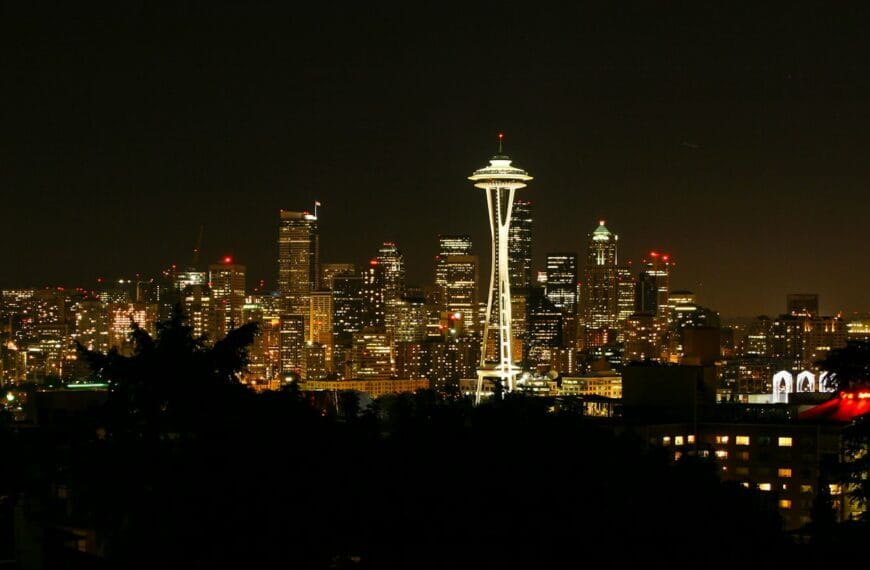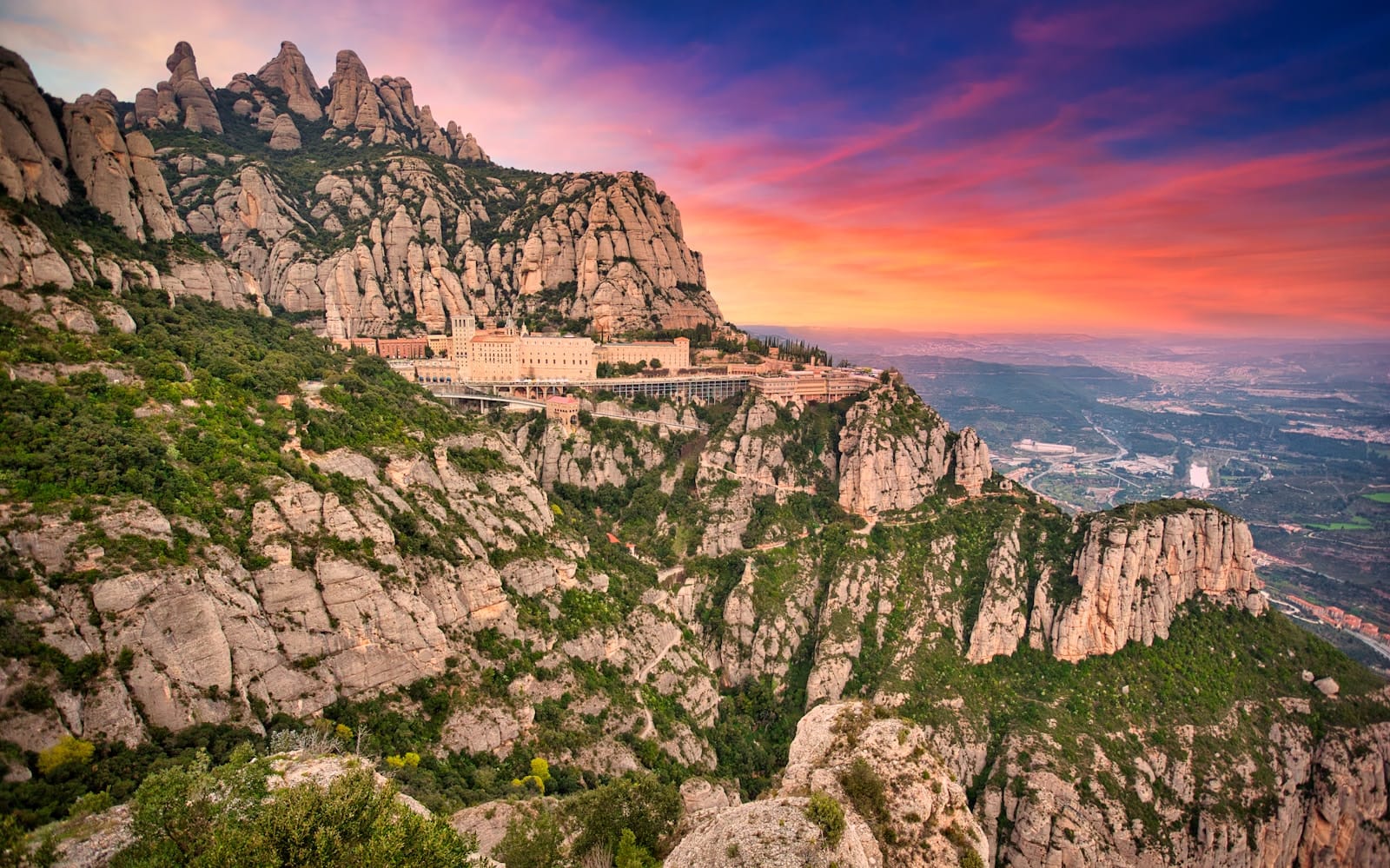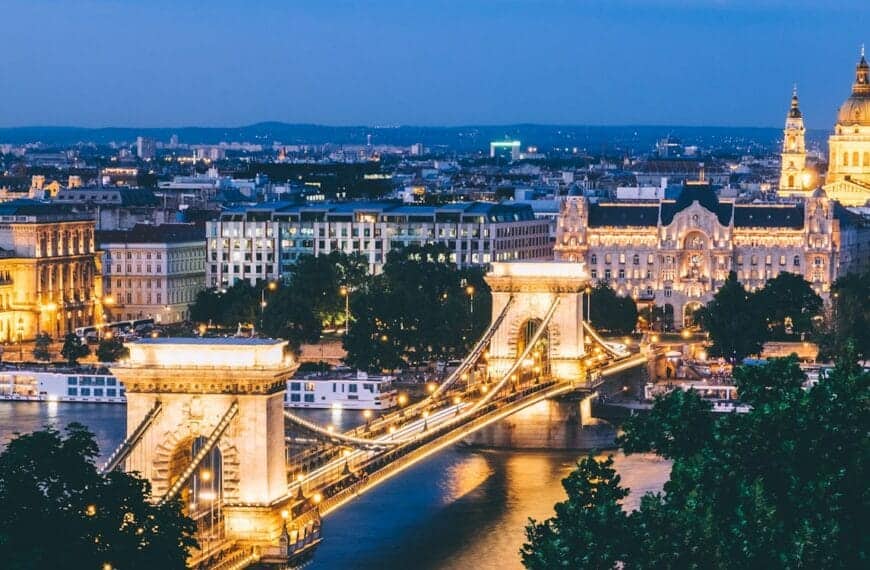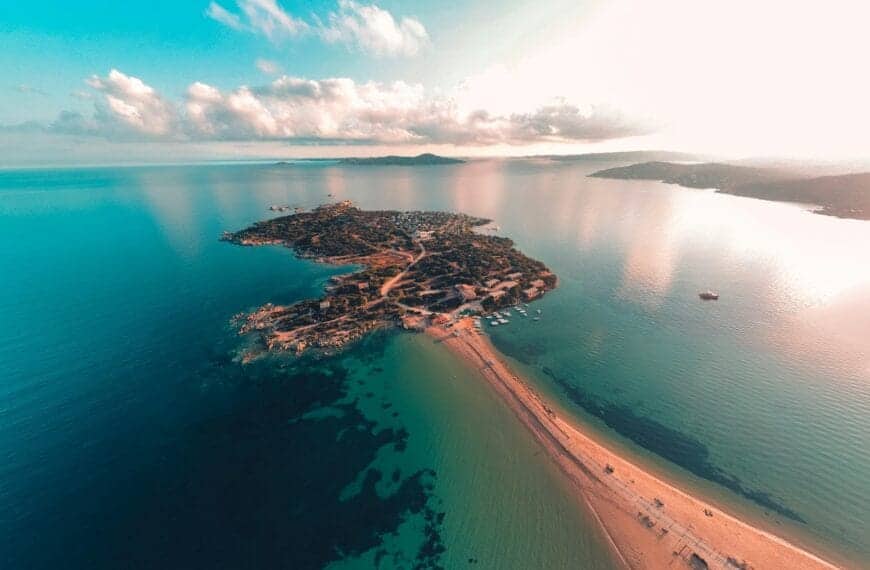St Peters Basilica Attractions – Art, Altars & Dome Views
Intro to St Peters Basilica
Stand beneath the largest dome in Christendom, where Renaissance architecture meets the resting place of saints. St. Peter’s Basilica isn’t just the spiritual center of the Catholic world — it’s a living museum of devotion, power, and artistic triumph.
From Bernini’s colossal baldachin to Michelangelo’s moving Pietà, this basilica holds works that helped shape Europe’s visual and religious identity. But the true grandeur lies in its layers — tombs, grottos, domes, and sacred relics that invite you to look closer.
This guide unpacks St. Peter’s Basilica attractions, must-see art, scenic viewpoints, and planning tips — with affiliate-friendly tour recommendations to enhance your visit.
💡Quick Facts:
Destination: St. Peter’s Basilica
Continent: Europe
Country: Vatican City (Sovereign City-State)
Administrative Division: Vatican City – located in St. Peter’s Square, adjacent to the Apostolic Palace
Area: ~22,000 m² (interior floor space)
Population: N/A (religious site)
Density: N/A
Capital: Vatican City
Regions/Subregions: Vatican Museums, St. Peter’s Square, Apostolic Palace, Sistine Chapel nearby
Official & Regional Languages: Italian, Latin; English widely used for tours and signage
Currency: Euro (€)
Time Zone(s): Central European Time (CET) / Central European Summer Time (CEST)
Airports: Rome Fiumicino (FCO), Rome Ciampino (CIA) – ~45–60 minutes by car or transit
Climate: Mediterranean – warm summers, mild winters
Known For: Michelangelo’s dome, Bernini’s baldachin, papal tombs, religious significance, Renaissance architecture, world’s largest church
🛂Arrival Info:
– Vatican City follows Italian Schengen visa policy
– No direct border control – entry via St. Peter’s Square from Rome
– Passport or ID required for Italy; no ticket needed for general Basilica entry
– Security screening required at all entry points
– Vatican Visitor Info
💉Health Info:
– No vaccines required for entry
– Nearest medical facilities located in central Rome
– Emergency services provided by Italian authorities
– Travel insurance recommended for non-EU travelers
– Italian Health Ministry
✅ Check travel insurance options for travel emergencies, delays, and medical needs abroad — get coverage here
✅ Stay Informed with Official Updates: World Health Organization – International Travel and Health | Travel health updates
🚨Travel Advisory:
– Highly secure site; Vatican security and Swiss Guard on duty
– Large crowds and long queues — early arrival or guided tours recommended
– Petty theft (pickpocketing) can occur in crowded St. Peter’s Square
– Dress code strictly enforced — no sleeveless tops, shorts, or short skirts
✅ Stay Informed with Official Updates: US Travel Advisory | UK Foreign Travel Advice
📅Holidays:
– Closed or has restricted hours during major Vatican events and holidays:
– Easter Sunday
– Christmas Day (December 25)
– Sts. Peter and Paul Day (June 29)
– Sunday Mass and Papal Blessings draw large crowds
– Best to check schedules during Holy Week and religious feast days
💰Visitor Info:
– Entry to the Basilica is free
– Dome climb: €8–€10 (via stairs or elevator)
– Guided tours, skip-the-line access, and combo Vatican packages available (€25–€50)
– Book early-morning or after-hours visits to avoid peak congestion
– Dress modestly to avoid being denied entry
✈️Airports:
– Closest international airports:
– Rome Fiumicino (FCO) – ~30 km from Vatican
– Rome Ciampino (CIA) – ~18 km from Vatican
– City access via Leonardo Express train, metro (Ottaviano), or taxis
– No direct airport connection to Vatican — entry by foot from Rome
✅ Delayed or canceled flight? Check if you’re eligible for compensation
🚍Transport:
– Metro Line A: Ottaviano station is a 10-minute walk from the Basilica
– City buses (routes 40, 64, 81) stop near Vatican walls
– Taxis must stop outside Vatican gates
– Tour buses drop off at designated areas near St. Peter’s Square
– No personal vehicles permitted within Vatican City
✅ Book reliable airport transfers and in-city rides in advance. Reserve your ride here
📶Connectivity:
– Wi-Fi not available inside the Basilica
– Strong cell signal available in the square and Vatican area
– Roaming agreements apply under Italy; EU citizens roam freely
– Public Wi-Fi in cafés and restaurants nearby, but not inside church grounds
– Phones must be silent inside; photography rules vary by section
✅ Stay connected abroad with affordable eSIM data packs. Get your eSIM here
📜Laws & Etiquette:
– Strict dress code: No bare shoulders, low-cut tops, short skirts or shorts
– Silence expected inside the Basilica and crypt areas
– Photography allowed (no flash) in general spaces; not allowed during Mass or in crypts
– Visitors must pass through metal detectors and bag checks
– Respect religious ceremonies – do not interrupt or take photos during services
🛡️Emergency Info:
– Emergency: 112 (Italy-wide), 113 (police), 118 (medical)
– Swiss Guard provides ceremonial and internal Vatican protection
– Vatican Gendarmerie Corps handles local policing
– U.S. and UK embassies are located in Rome
– Tourist info desk near St. Peter’s Square
✅ Use embassy locator tools: Embassies Worldwide
🌦️Weather:
– Best time to visit: April–June and September–October for comfortable temps and smaller crowds
– Summer (July–August): Hot and extremely crowded (temps 30–35°C)
– Winter (Dec–Feb): Quieter, cooler, and often rainy (temps 8–14°C)
– Bring water, sun protection, and a scarf or wrap to meet dress code in warmer months
✅ Stay prepared—check the weather forecast for your destination — Weather Forecast
Why Visit St. Peter’s Basilica Attractions?
St. Peter’s Basilica stands not only as the Vatican’s architectural crown, but also as one of the most visited pilgrimage sites on Earth. Constructed over St. Peter’s burial site, the basilica’s spiritual magnetism is matched by its scale — over 186 meters long with space for 60,000 people.
The site unites the brilliance of Renaissance masters like Bramante, Raphael, Bernini, and Michelangelo. And with free general admission, it’s one of Rome’s greatest values — if you plan ahead.
From underground tombs to panoramic rooftop views, every part of this sacred space has something unforgettable to offer.
Iconic Landmarks and Historic Sites
St. Peter’s Square
Before entering the basilica, you’ll cross one of the most dramatic public spaces in Europe. Designed by Bernini in the 17th century, the elliptical plaza is framed by 284 columns and centered by a 25-meter Egyptian obelisk.
Why it matters:
It represents the “arms of the Church” reaching out to embrace the world — and sets the stage for historic papal events and blessings.
Travel tip:
Arrive before 8am or after 6pm for serene light and minimal crowds. Pope audiences occur Wednesday mornings.
Step through the bronze doors and you’ll immediately feel the scale — 150-foot ceilings, intricately carved columns, and centuries of sacred art. Bernini’s baldachin (canopy) towers over the high altar, resting directly above St. Peter’s tomb.
Why it matters:
The basilica’s grandeur was meant to awe — and unify the Catholic world under one sacred roof. Even skeptics will be struck by the craft and symbolism.
Visiting tips:
- General entry is free
- Modest dress code enforced
- Audioguides or live guided tours highly recommended
Michelangelo’s Pietà
Located in the first chapel on the right, this marble sculpture shows the Virgin Mary cradling the body of Christ. Completed when Michelangelo was just 24, it’s considered one of the most moving religious works ever created.
Why it matters:
This is the only work Michelangelo ever signed — carved with grace, sorrow, and sublime technique.
Photography tip:
It’s behind glass — use your zoom lens and visit early for less glare.
Tomb of St. Peter and Vatican Grottoes
Beneath the basilica lies a multilayered history. The Vatican Grottoes house papal tombs and sacred relics, but even deeper still lies the Vatican Necropolis, where the Apostle Peter is believed to be buried.
What to expect:
- Grottoes are open to the public (free, via basilica)
- Scavi Tour to the necropolis requires advance booking (months ahead)
- Tomb of Pope John Paul II is one of the most visited
Museums, Galleries & Cultural Spaces
While St. Peter’s is not a museum by definition, it’s filled with artistic treasures worthy of a gallery.
Chapel of the Sacrament
Adorned with golden mosaics and quiet reverence, this chapel is used for private prayer and Eucharistic adoration.
Why visit:
A calm, spiritual counterpoint to the basilica’s grandeur — lit for meditation, not spectacle.
Statue of St. Peter (Bronze)
Pilgrims from around the world line up to touch or kiss the foot of this 13th-century statue, believed to bring blessings and protection.
Why it matters:
It’s an emotional tradition — and a reminder that this space is alive with devotion.
Look for:
The right foot is visibly worn from centuries of touch.
Monument to Pope Alexander VII
One of Bernini’s greatest sculptural ensembles, this funerary monument shows the pope in prayer above a marble skeleton holding an hourglass — symbolizing the passage of time and final judgment.
Details to admire:
Draped red marble, dramatic chiaroscuro lighting, and theatrical movement throughout the structure.
Recommended Tours for St. Peter’s Basilica
Booking a guided experience unlocks far more than access — it offers context, efficiency, and peace of mind. Whether you’re interested in the art, faith, or hidden depths of this sacred space, the right tour transforms your visit.
Top-rated tour experiences:
– St. Peter’s Basilica Guided Tour with Dome Climb
Explore the history and climb to the dome for panoramic Rome views.
– Basilica + Vatican Grottoes Tour
Includes the underground tombs, historical layers, and the basilica’s origins.
– Early Access Vatican Tour with St. Peter’s Entry
Beat the crowds and enter the basilica before public lines form.
– Papal Audience + Basilica Visit Combo
Witness the Pope’s weekly address, then enter the basilica with a local expert.
Natural Attractions & Scenic Spots
St. Peter’s Dome (Cupola)
The dome, designed by Michelangelo and completed by Giacomo della Porta, soars nearly 450 feet above the floor — one of the tallest domes in the world. You can climb it for one of the most breathtaking panoramic views of Rome.
Why it matters:
From the top, you’ll see the entire Vatican complex, the Tiber River, Castel Sant’Angelo, and Rome’s seven hills. It’s one of the most rewarding climbs in Europe.
Entry info:
– Elevator to terrace: €10
– Stairs all the way: €8
– ~320 additional steps after elevator
– Opens around 8:00am; last entry ~5:00pm
– Not recommended for claustrophobic travelers
St. Peter’s Basilica Rooftop Terrace
Before the final ascent to the dome, the rooftop terrace offers a closer look at the statues of Christ and the apostles along the facade. There’s also a small souvenir shop and café here — one of the few spots to relax with a view over Vatican rooftops.
Travel tip:
It’s one of the quietest areas in the Vatican. Take a break here before tackling the final spiral stairs to the dome summit.
St. Peter’s Square Fountain Views
Standing in the center of the piazza between the twin fountains — one by Carlo Maderno, the other by Gian Lorenzo Bernini — you’ll have a symmetrical view of the basilica framed by the curved colonnades.
Best photo moment:
Golden hour (1 hour before sunset) for soft light, dramatic shadows, and fewer crowds.
Unique & Unexpected Places to Visit
Papal Tomb of John Paul II
Located just inside the basilica, the tomb of Pope John Paul II remains one of the most visited and venerated. It’s marked by continuous floral tributes and quiet lines of the faithful.
Why it matters:
John Paul II was a globally beloved figure — his tomb symbolizes the modern human connection to papal legacy.
Altar of the Chair of St. Peter
In the apse of the basilica, Bernini created a massive gilded throne structure surrounded by glowing light and four Doctors of the Church. It houses what is believed to be part of the original wooden chair used by St. Peter himself.
Hidden detail:
Look up at the alabaster window — it features the Holy Spirit in the form of a dove, radiating divine light across the altar.
Pietà Chapel Guard Station
Though not open to the public, you’ll often see Swiss Guards near this area. Their colorful Renaissance-style uniforms and solemn expressions contrast with the constant tourist movement — offering a live reminder of Vatican tradition.
Vatican Obelisk Origins
The central obelisk in St. Peter’s Square is over 4,000 years old — brought from Egypt to Rome by Emperor Caligula. Its journey from pagan icon to Christian symbol mirrors Rome’s spiritual transformation.
Insider trivia:
It’s the only obelisk in Rome that hasn’t toppled since ancient times — and marks the spot where Peter was believed to have been martyred.
How to Plan Your Visit to St. Peter’s Basilica
Planning your visit well can mean the difference between frustration and reverence.
Admission:
– Entry to the basilica: Free
– Dome climb: €8–€10
– Grottoes: Free
– Scavi Tour (necropolis): €13 (must book via Vatican Scavi office)
Opening hours:
– Basilica: 7:00am to 7:00pm (Apr–Sept); 7:00am to 6:30pm (Oct–Mar)
– Dome climb: 8:00am to 5:00pm (times vary)
– Avoid visiting during major liturgical celebrations
Dress code:
No bare shoulders, shorts, or above-the-knee skirts. Cover-up scarves are sold nearby if needed.
Entry logistics:
– Security checks are at the square perimeter
– Lines peak between 10:00am and 2:00pm
– Early morning or late afternoon = best flow
Best day to visit:
Tuesday or Thursday — avoids Monday museum closure overflow and Wednesday papal audiences.
Tours or DIY?
Self-guided visits are fine, but expert guides offer invaluable insight into symbolism, history, and art interpretation.
When to Visit St. Peter’s Basilica Attractions
Best seasons:
– Spring (April–early June): Mild weather, manageable crowds
– Fall (late Sept–Nov): Fewer tourists, gorgeous golden light
Avoid:
– High summer (July–August): Sweltering heat, long queues, minimal shade in the square
– Holy Week (Palm Sunday to Easter): Beautiful, but often closed to non-pilgrims for ceremonies
– Christmas & New Year’s: Magical but extremely busy — liturgies limit general access
Early bird tip:
Arrive by 7:00–7:15am to beat security lines and experience the basilica with near-silence.
Travel Tips for Seeing the Best of St. Peter’s Basilica
- Book dome climb tickets in advance or arrive before 8:15am
- Respect the dress code — even in summer
- Use the elevator to terrace, but walk the final 320 steps for full dome experience
- Bring a zoom lens to capture Pietà through the protective glass
- Watch out for midday glare in St. Peter’s Square — wear sunglasses and hydrate
- Download a self-guided audio app or take a small-group tour for deep context
- Visit the grottoes before or after peak basilica hours
- Avoid Sunday mornings — Mass restricts visitor movement
Explore More Vatican and Rome Attractions
Pair your visit to St. Peter’s Basilica with nearby must-sees:
- Sistine Chapel Attractions Guide — Walk beneath Michelangelo’s ceiling
- Vatican Museums Highlights — Raphael Rooms, map galleries, and classical sculpture
- Vatican Museum Tours — Peaceful guided experience and epic galleries
- Rome Travel Guide — Plan the rest of your Eternal City experience
- Top Rome Walking Tour — Combine Vatican and Trastevere with expert guides
Ready to enter the world’s most powerful house of worship?
Whether you climb the dome at sunrise or stand before the high altar at dusk, St. Peter’s Basilica offers a once-in-a-lifetime journey through faith, architecture, and human genius.
Book top-rated St. Peter’s Basilica tours and skip-the-line Vatican experiences today — and turn your Roman holiday into something eternal.










